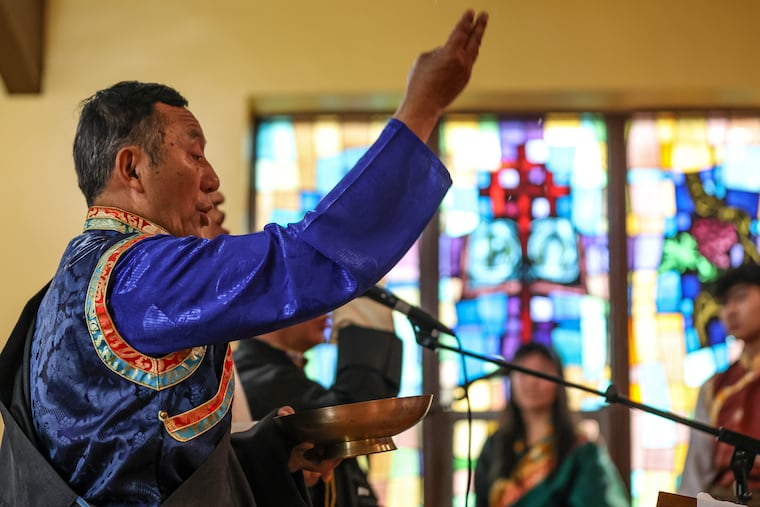Tibetans in Philly now have their own community center: ‘We have to save our culture’
The community center, in a former church in Norristown, will host Tibetan language classes for children and other cultural celebrations for the roughly 200 Tibetans in the area.

Tibetans in the Philadelphia region now have a space to call their own.
For the last few years, the Tibetan Association of Philadelphia has rented churches and temples, headed to parks, even borrowed space at a construction company’s office for members to host cultural events and their weekly, volunteer-run Tibetan language classes for children. But now, they have a place to return to: their new community center in Norristown.
“We’ve been waiting for so long,” said Tenzin Shakya, former school director of the Tibetan Association of Philadelphia. “Every member, we have dream that one day we get a center.”
Cultural preservation is deeply important for the Tibetan diaspora, including the nearly 200 Tibetans living in exile in the Philadelphia area. Since the Chinese invasion of their homeland in 1950, their language and cultural traditions have been under attack. In Tibet under the Chinese occupation, the Chinese have destroyed more than 6,000 monasteries, imprisoned thousands of Tibetans, and replaced the Tibetan language with Chinese. Their leader, the Dalai Lama, escaped in 1959 to Dharamshala, India, and established a government in exile.
Because of this, practicing Tibetan folk arts, speaking Tibetan, and wearing Tibetan traditional garb is, in its own way, a kind of protest, said incoming association president Tsering Jurme.
» READ MORE: From 2020: Tibetans in Philly dream of a place of their own — and work to make it real
For four months, members of the Tibetan Association of Philadelphia volunteered on weekends to remodel the abandoned church they purchased for their community center — “a fixer-upper,” Jurme, 52, called it. Many Tibetan men in Philadelphia work in construction, while women often work as housekeepers or nurses. They refinished the floors and built a floor-to-ceiling traditional wooden structure to showcase a Buddha statue and other cultural symbols, but they kept the exposed beams and the stained-glass windows.
On Saturday afternoon at the grand opening of the community center, three generations of Tibetans gathered to celebrate the milestone alongside a select group of supporters, “honorary Tibetans,” such as Jeffrey Granett, a retired Bryn Mawr cardiologist who donated $100,000 to the nearly $500,000 project and was adorned in a white khata, a Tibetan Buddhist scarf that symbolizes kindness. There were elders, who remember Tibet before the Chinese occupation, those in their 40s and 50s who grew up in exile in Southern India before coming to the States, and children who have been immersed in their culture because of the tight-knit community in the region.
The celebration was a marker, too, of how the community had grown: Twenty years ago, when the association was founded, there were just 30 Tibetans in the area. Still, the Philadelphia community is tiny compared with ones in New York and Toronto.
Teenagers performed a traditional group dance known as a gorshey, while watching out for toddlers running onto the stage. Thick-skinned momos, butter tea, and Yards IPA were served. Everyone wore traditional dress, showing off styles from different regions: jewel-toned dresses, cowboy-esque hats, fleece-lined wraps.
The launch of the new center was meaningful to Tibet native Dolkar Lhamo, who came to the Philadelphia region from India 10 years ago because, as she said, “We have to save our culture.”
In the new space, as a young boy sang a song in Tibetan about longing for his mother, Jurme looked to the future. An abandoned structure next to the community center could become a gym with a basketball court. Maybe they could build a library, or host classes for those from outside the Tibetan community.
“Now there are so many possibilities,” he said.